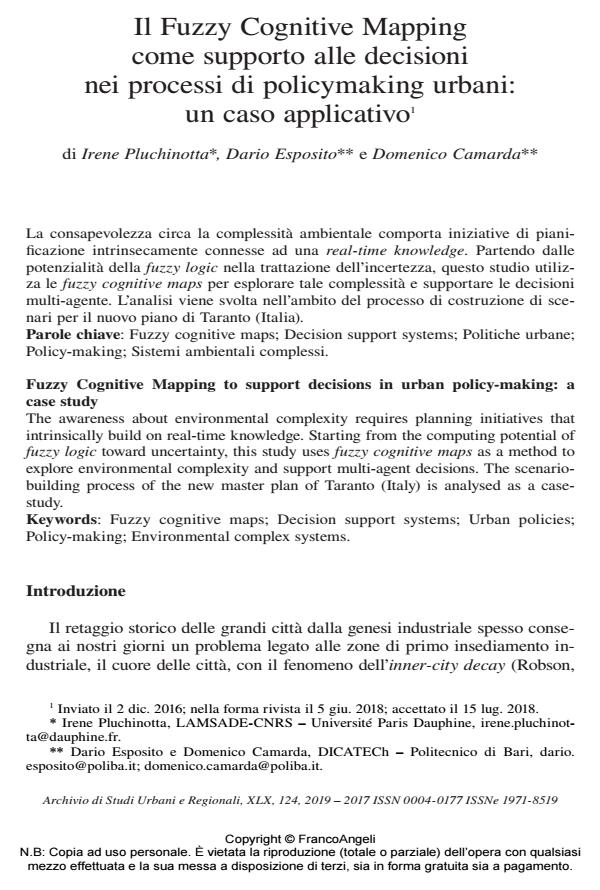Il Fuzzy Cognitive Mapping come supporto alle decisioni nei processi di policymaking urbani: un caso applicativo
Titolo Rivista ARCHIVIO DI STUDI URBANI E REGIONALI
Autori/Curatori
Anno di pubblicazione 2019 Fascicolo 2019/124
Lingua Italiano Numero pagine 26 P. 122-147 Dimensione file 222 KB
DOI 10.3280/ASUR2019-124006
Il DOI è il codice a barre della proprietà intellettuale: per saperne di più
clicca qui
Qui sotto puoi vedere in anteprima la prima pagina di questo articolo.
Se questo articolo ti interessa, lo puoi acquistare (e scaricare in formato pdf) seguendo le facili indicazioni per acquistare il download credit. Acquista Download Credits per scaricare questo Articolo in formato PDF

FrancoAngeli è membro della Publishers International Linking Association, Inc (PILA)associazione indipendente e non profit per facilitare (attraverso i servizi tecnologici implementati da CrossRef.org) l’accesso degli studiosi ai contenuti digitali nelle pubblicazioni professionali e scientifiche
La consapevolezza circa la complessita ambientale comporta iniziative di pianificazioneintrinsecamente connesse ad una real-time knowledge. Partendo dallepotenzialita della fuzzy logic nella trattazione dell’incertezza, questo studio utilizzale fuzzy cognitive maps per esplorare tale complessita e supportare le decisionimulti-agente. L’analisi viene svolta nell’ambito del processo di costruzione di scenariper il nuovo piano di Taranto (Italia).
Parole chiave:Fuzzy cognitive maps; Decision support systems; Politiche urbane;Policy-making; Sistemi ambientali complessi
, Il Fuzzy Cognitive Mapping come supporto alle decisioni nei processi di policymaking urbani: un caso applicativo in "ARCHIVIO DI STUDI URBANI E REGIONALI" 124/2019, pp 122-147, DOI: 10.3280/ASUR2019-124006